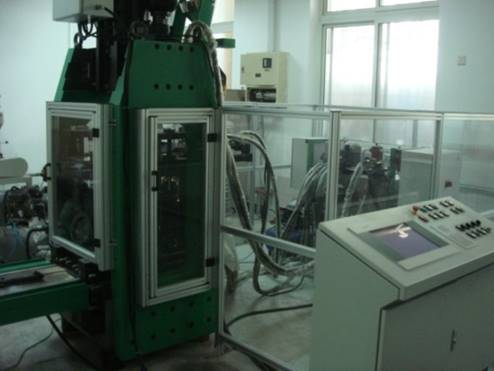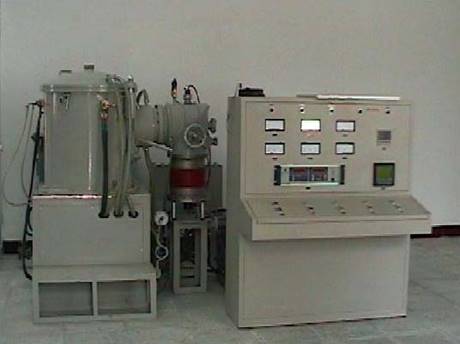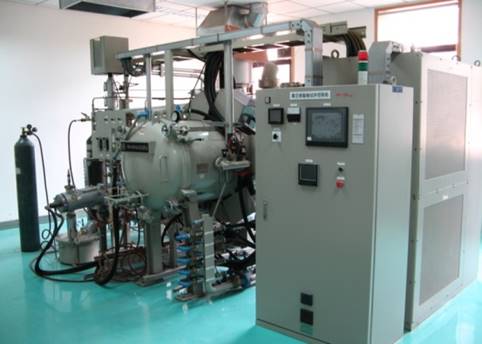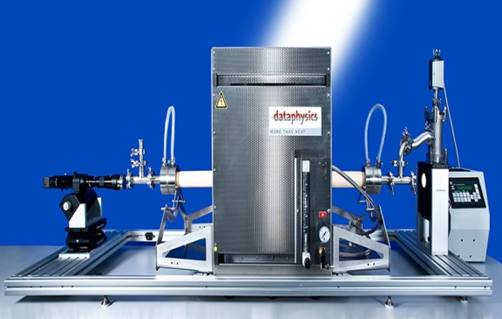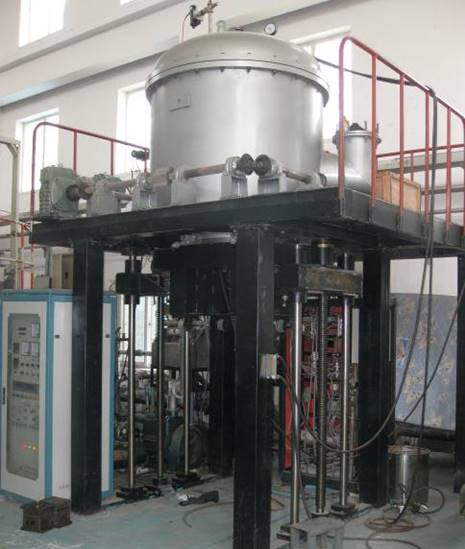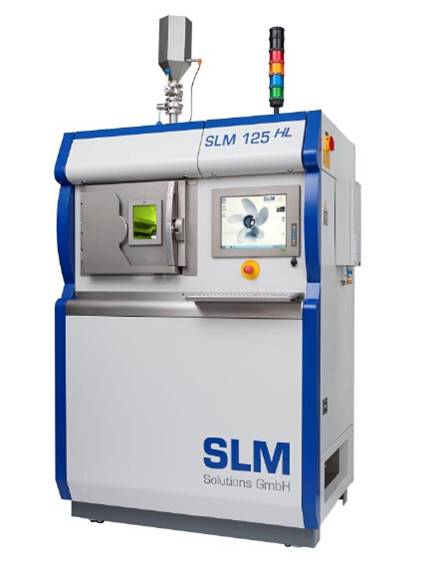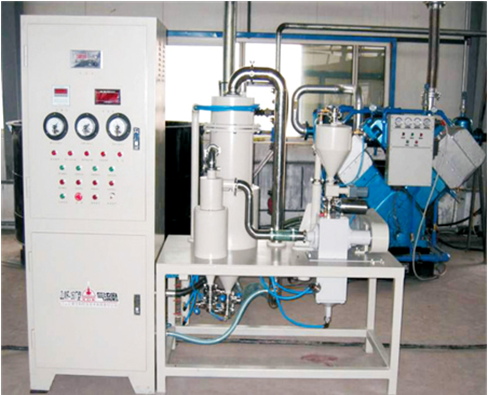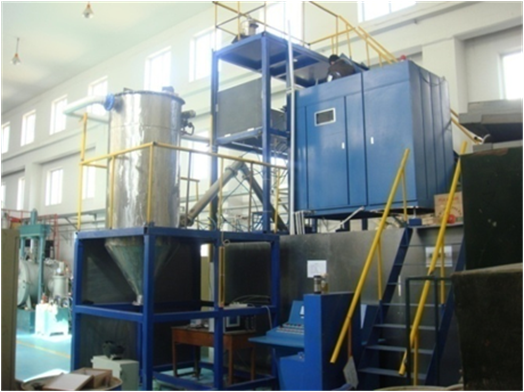Institute of Powder Metallurgy
Advanced Powder Metallurgy Forming Technology Labratory
【Laboratory Introduction】
Molding is an important process step in powder metallurgy industry. Advanced molding technology is the key to the preparation of high-performance PM materials and near-net-shape manufacturing. The Advanced Powder Metallurgy Molding Technology Research Laboratory is mainly engaged in the research and application of advanced powder metallurgy molding technologies such as MIM, HVC, HIP and infiltration technology. In addition, the research on high-performance iron-based powder metallurgy materials and parts, powder superalloys, powder high-speed steel, powder metallurgy TiAl and Ti alloys, high thermal conductivity electronic packaging materials, new battery materials and powder metallurgy process simulation technology were also included.
【Team members introduction】
|
|
|
|
||
Xuanhui Qu |
Xin Lu |
Shubin Ren |
Lin Zhang |
Baicheng Zhang |
Gang Chen |
Xuanhui Qu, Professor, Doctoral Tutor, Yangtse River Scholar Distinguished Professor, Dean of Institute for Advanced Materials and Technology.
Xin Lu, Professor, Doctoral Tutor.
Lin Zhang, Professor, Master Tutor.
Shubin Ren, Professor, Doctoral Tutor.
Baicheng Zhang,Associate Professor, Master Tutor.
Gang Chen, Associate Professor, Master Tutor.
【Research interest and achievements】
1. Preparation of large-scale and high-purity rare metal products
Aiming at the demand of high-end equipment and microelectronics industry for large-scale and high-purity rare metal products, efforts should be taken to enhance the scientific and technological innovation ability and overall competitiveness of rare metal materials industry, and guided by the development needs of national high-end equipment and strategic emerging industries. The key problems faced by the rare metal material industry include: how to solve the product homogenization and low value phenomenon, and break through the technology of impurity elements control, high-temperature and high-pressure densification of large-scale products, microstructural uniformity control, high-precision deformation processing and precision preparation. For these reasons, the scientific issues would be addressed—the trend and influence of impurity elements for high-purity rare metals, microstructural evolution and precisely control of dimension during sintering and deformation for large-scale rare metals, the mechanism of non-uniform grain growth of ultra-high-purity tungsten and its alloy targets, etc. Hence, we will strive to develop rare metal products such as large-scale tungsten crucibles/tubes, tungsten plates, molybdenum plates, rhenium plates, tungsten and its alloy targets, ultra-high-purity single-crystal silicon rings, to achieve large-scale and integrated manufacturing of heating element/shield and crucible for high-end equipment, and the industrial capacity of high-purity rare metal products with an annual output of 1500 tons. The implementation of the project will promote the structural adjustment and industrial upgrading of the high-purity rare metals industry, then achieve the transformation of China's rare metals industry.
2. Manufacturing and industrialization technology of copper based brake pads
The basic braking device used in high-speed railway train is generally disc-shape braking, which can slow down or stop the train under the action of friction force resulting from the contact of brake pads and brake disc. The brake pads and brake disc constitute a pair of friction pairs, in which the brake pad is a key component to ensure the safety of high-speed railway train. The properties of brake pads directly affect the braking performance, the service life of friction pair and the safe operation of the train. The main research contents of this project are as follows: The precise control principle and technology of copper and copper alloy powder characteristics; The influence of powder characteristics on the preparation and properties of brake pad material; Developing powder preparation technology for brake pad; The effects of binder, lubricant, mold structure and pressing mode on the properties of green compacts; The effects of surface modification of lubricant and the method of pre-alloying and sintering on the densification and microstructure of copper-based brake pad; The principle and technology of controlling the structure of brake pad materials; Preparation of copper-based brake pad used in high-speed railway train with operation speed of 350km/h or above.
3. The basic research of intelligent metal forming technology --- the scientific basis of controlled solidification and controlled forming of high-performance metal materials.
Aiming at the common basic problems that need to be solved in the intellectualization of metal material control forming technology, we focus on the research of the theoretical model of the material solidification, the structural change and genetic behavior in the whole process of processing, the preparation and processing process, and the construction of the process simulation and microstructure prediction platform to provide tools for the optimization of the processing forming technology. Based on the use of artificial intelligence technology, the database technology such as neural network and the analysis of historical production data, an intelligent prediction and control system of material structure, performance, shape and size is established.
4. The plasma atomization preparation technology for spherical powder of refractory metals and their alloys-short-flow preparation and processing technology of controlled solidification of high-performance metal materials
Spherical powders of refractory metals and alloys have been used more and more widely because of their excellent flow ability and high filling density. In the field of thermal spraying, more uniform and dense coating as well as products with better wear resistance are obtained because of the good flow ability of spherical metal powder. In the field of powder metallurgy, spherical metal powder is the high-quality raw material expected by the powder metallurgy industry. Aiming at meeting the development and market demand of refractory metals, this project studies the key preparation technology for spherical powder of refractory metals and alloys with plasma spray, which builds a technical foundation for the industrial production of low-cost and high-performance spherical powder.
5、Fundamental research on near net shape forming of TiAl intermetallics
TiAl intermetallics are a new generation of prospective light materials for high temperature structural applications. High Nb containing TiAl alloys invented by Guoliang Chen are a kind of high performance TiAl-based alloys with our own independent intellectual property rights, and have a great application prospect in the field of modern aerospace engineering. In order to overcome the problems of their poor roomtemperature ductility and workability, the manufacturing principle and technology of radio frequency plasma powdering and powder injection molding are investigated. In the project, the emphasis of researches is laid on the regularity of melting, atomization, spheroidization and solidification of coarse high Nb containing TiAl alloyed powder, the design of low residual binder and the rheological behavior of feedstock, the debinding process of molded compacts and the sintering densification, as well as the control of microstructure and size of the products. It is believed that the studies will provide a theoretical and technical foundation for the preparation of fine spherical TiAl alloyed powder and the forming of complicate parts, and the research findings will also be significant to promoting the application of high Nb containing TiAl based alloys.
6. Materials Science Data Sharing Network
Based on the integration and reconstruction of existing and relatively mature materials science data resources, we will establish cross-departmental, inter-regional, multi-level, easy-to-manage and differentiated requirements to meet different needs of national construction, education, scientific research, production, management, and national defense. A material data system with distributed distribution and orderly sharing, forming a material data service system and a shared network with complete and complete data, safe and reliable storage, flexible and convenient use, maximizing the benefits of data information, meeting national construction, social development and technological innovation. The urgent need to integrate and reconstruct existing and relatively mature materials science data resources, to establish cross-departmental, inter-regional, multi-level, and easy to meet the different needs of national construction, education, scientific research, production, management, and national defense. Management, heterogeneous distribution, orderly shared material data system, forming a material data service system and shared network with complete and complete data, safe and reliable storage, flexible and convenient use, maximize the benefits of data information, and meet the national construction and social development. Urgent need for technological innovation. The project will construct five data sharing resource nodes for different material fields, such as non-ferrous metal materials and special alloys, ferrous materials, composite materials, organic polymer materials and material basic data sharing resource nodes, and five other material data. Design and framework construction of resource nodes, formulate relevant standards or norms for material science data sharing, build shared network and shared network management and service centers, form a set of joint construction and operation mechanism, and a set of better service mechanism.
7. Research on preparation technology of argon atomized high temperature alloy powder
Through the research on the key technologies of high-temperature alloy powder preparation, the breakthrough of high-performance nickel-based superalloy powder preparation and other technical bottlenecks restricting the development of advanced aero-engines and aviation industry can be achieve, and the domestic supply of high-quality powder disk argon atomized powder which the preparation is satisfied, forming the ability to develop and industrialize high-performance metal powder and powder superalloy turbine discs in batch production, and meet the development needs of major national projects such as large aircraft.
8. Research on forming technology of powder superalloy (PM) turbine disk
Through the research of the forming technology of the key component of superalloy turbine disk, the bottleneck of restricting the development of advanced aero-engines and aviation industry, such as forming of high-performance powder turbine disk, is break through. The powder turbine disk meeting the use requirements is prepared. The mass production of high-performance metal powder, the development and industrialization of powder superalloy turbine disks are achieved, which meet the development needs of major national projects such as the giant aircrafts. Aims: researching the process of special forging or extrusion forming for powder superalloy with fine grained microstructure, preparing FGH96 powder turbine disk meeting the technical standards of giant aircraft engine disk and passing through the final assessments. Research contents: (1) preparation technology of superalloy with fine grained microstructure for superplastic isothermal forging; (2) superplastic isothermal forming and heat treatment process of powder turbine disk; (3) microstructure and properties of powder superalloy components; (4) testing and assessing of FGH97 powder turbine disk.
9. Preparation of high performance powder metallurgy parts
This subject belongs to the field of powder metallurgy parts for automobiles. The dosage of powder metallurgy parts is one of the indicators to evaluate the development level of a country's automobile. It also manifests the development level of powder metallurgy technology in the country. Through the research of this project, more than two kinds of high-performance PM parts for automobile were developed, such as hollow camshaft and planetary gear frame. And a production line of high-performance PM parts for automobile with an annual production capacity of 1 million pieces was built. USTB is mainly responsible for the research of high-density powder metallurgy parts process and performance examination, and assists in the completion of powder metallurgy parts preparation process research and production line construction. Material composition: Fe-(1.5~2.5%) Cu-(0.5~2.0%)C; Fe-(1-5%)Cr-(0.2-0.7%)Mo-(0-2%)Cu -(0- 0.5%) C. Powder metallurgy components with density ≥ 7.4g/cm3; flexural strength ≥ 500 MPa, tensile strength ≥ 700 MPa, HRC ≥ 45 were successfully prepared.
10. Research on Material Science Database and Its Application Technology
The importance of material data to national security, engineering service safety, scientific and technological innovation, intelligent manufacturing and so on is becoming more and more obvious in the data age. In the material genome project put forward by the United States in 2011, material data, together with material calculation simulation and material experimental characterization, are the three basic tools for the whole process research of material development. So that material researchers and production managers more fully understand the role of material data to accelerate the process of material research and development. Material data has the characteristics of diversity, complex acquisition process, complex relationship between data, strong knowledge property rights and so on, which makes the collection, storage, sharing and application of data more complex. To build a national public platform for material data research and development and service, to strengthen the collection and integration of material data, to construct national civil material database and military material database, to carry out the construction of relevant standards and specifications for material data and material database, to carry out custom thematic database service, data push service, and to carry out the research of material informatics and material data science at the same time.
11. Research on the basis of near-net-shape preparation technology of layered aluminum matrix composites
The composites with lamellar structure consisting of aluminum alloy and aluminum metal matrix composites reinforced with ceramic particles are a kind of promising highperformance materials for vehicle, aeronautical and aerospace, as well as electronic industry due to the combination of promising thermal-physical, mechanical, wearing and friction properties, as well as the machineability of individual components. In order to overcome their forming difficulty, in this project, a novel processing of powder injection molding-infiltration will be studied for preparing net-shape lamellar composite components. The research emphases will be put on the flow behavior of ceramic particle feedstock, the control of dimension and porosity of the molded ceramic reinforcement compacts, the modification of aluminum melts and the dynamics of their infiltration in the porose ceramic compacts, and the interfacial control etc. The research will lay the theoretical and technologic foundations of the net-shape forming processing for lamellar composites.
12. High-performance temperature-sensitive ferrite powder injection molding and its key technologies for industrialization
This project proposes powder injection molding technology to prepare high-performance temperature-sensitive ferrite materials and devices, and obtains high performance through material composition design, improved powder preparation method, development of new binder system and degreasing process, optimization of sintering system and device dimensional precision control to get high-precision miniature and heterogeneous temperature-sensitive ferrite devices.This project solve the key industrialization technologies and achieve efficient industrial production.The project research meets the requirements of miniaturization, light weight and high performance of the device, and promotes the technological progress of soft ferrite enterprises in Guangdong Province, and promotes the development of related industries, with significant economic and social benefits.
13. Research on the synthesis of AlN ceramic powder by low temperature combustion
Through the study of thermodynamics and kinetics of low-temperature combustion synthesis reaction, the mechanism of low-temperature combustion synthesis reaction in the presence of organic carbon source is revealed, and the influence laws of raw material ratio, ignition conditions and combustion environment on combustion reaction and composition, particle size and morphology of synthesis precursor are established. Through the study on the kinetics of carbothermal reduction reaction and the mechanism of ceramic particle growth, the parameters of carbothermal reduction reaction of precursor were determined to control the particle size and morphology of AlN powder. Based on the above study, the feasibility, law and mechanism of AlN powder preparation by low temperature combustion synthesis precursor of carbothermal reduction are established, and the theoretical reference is provided for the application of low temperature combustion synthesis carbothermal reduction method in the preparation of other non oxide ceramic powders (such as SiC, Si3N4, TiN, TiC, BN, WC, etc.).
14. Novel Co-base alloys strengthened by γ' phase and oxide dispersion
In view of the challenge that conventional Co-base alloys lack sufficient intermediate-temperature strength and microstructural instability easily occurred at high temperature, the combination of γ´ precipitation strengthening and oxide dispersion strengthening (ODS) mechanisms were introduced into novel Co-base ODS alloys by mechanial allotying route. High-temperature strength can be improved from the following three aspects: refinement of oxide dispersion, optimization of γ′ precipitates and coarsening of grains. Particular emphasis is placed on the dissolution-precipitation mechanism, the refinement of oxide dispersion and the mechanism to control the interfacial microstructure, as well as the evolution of microstructure from supersaturated solid solution induced by mechanical alloying. The special secondary recrystallization behavior of ODS alloys was elucidated in detail on the basis of better understanding the key processing parameters on the formation of coare grain structure. The strengthening mechanisms was studied through mechanical property tests and microstrcutural analysis. Novel Co-base ODS alloys is expected to extend both intermediate and high temperature strength limit of conventional Co-base alloys, which are potential candidattes for the key components of turbine blades, nozzel and combustion chamber in advanced gas turbine. This work is of great scientific importance and practical application value for the extention of the service temperature and the enrichment of our knowledge on the preparation of immicible alloys by mechanical alloying.
15. Research on Near-net-shape Forming Technology of Powder Superalloy for Automobile Turbocharged Turbine
Turbocharging technology is one of the most effective methods for energy saving and emission reduction in the automotive industry. The powder injection molding technology can realize the net-shape forming of the complex-shaped turbine wheel and avoid the defects such as inclusions, composition segregation and nonuniform microstructure in the cast turbine wheel. The research on powder injection molding technology for superalloy turbine wheel is of great significance for promoting the application of turbocharging technology and realizing the energy saving and emission reduction. The argon atomized K418 alloy powder is used as raw material, adding multi-component paraffin-based binder designed independently. Meanwhile, powder injection molding technology is adopted to prepare complex-shaped turbine wheel. The turbine wheel with full density, uniform microstructure, excellent mechanical properties, contour conforming to the use requirements, and good surface finish is achieved by optimizing subsequent hot isostatic pressing and heat treatment process. It breaks through the key technical difficulties such as the mold design of complex-shaped turbine wheel, the optimization of PIM process parameters, sintering densification and dimensional precision control. Comparing with the cast turbine wheel, the comprehensive mechanical properties are significantly improved, which can effectively promote the popularization of turbocharging technology.
16. Design and manufacture technology of biomedical Titanium (Ti) and its alloys
Titanium (Ti) and its alloys are considered as a promising orthopedic implant material because of their excellent mechanical properties and satisfying biocompatibility. Currently, pure Ti and Ti-6Al-4V are widely used in clinic, but these alloys are at the risk of releasing toxic ions, such as aluminum (Al) or vanadium (V). The release of these ions after long-term implantation in vivo is reported to induce a series of problems such as Alzheimer’s disease and mental disorders. Besides, these alloys have a higher elastic modulus than that of native human bone (~110 GPa vs. 0.01-30 GPa), which may lead to bone resorption and hence failure of the implant finally. Therefore, there is an urgent demand to develop new Ti alloys that have a lower elastic modulus and contain no toxic elements. In this project, novel Ti and its alloys are designed through the d-electron theory, the molybdenum equivalence (Moeq), and the electron-to-atom ratio (e/a) approaches, and then the designed alloys are fabricated by near-net-shape forming technology, such as 3D printing (Selective laser melting, SLM), Metal injection molding (MIM), and so on. Finally, the mechanical, chemical and biological properties of the fabricated alloys were evaluated. This project not only promotes the application of novel Ti and its alloy in the field of biomedical but also presents the necessary supporting information for their clinical applications as orthopedic implants.
17. Near-net-shape forming of low-cost Ti alloys
Titanium (Ti) and its alloys are widely used in aerospace, navigation, chemistry and biomedical fields due to their high specific strength, superior mechanical property, excellent corrosion resistance. However, the overall manufacturing cost of Ti alloys is very high on account of the expensive raw powders and a lot inadequate machine work. Therefore, how to reduce the manufacturing cost is a vital issue to promote the development of Ti alloys. This project is aim to reduce the cost of raw powders by improving the existing preparation technology and exploiting a novel preparation technology of Ti powders. Furthermore, this project is also focusing on the research of increasing the material utilization and decreasing the processing cost by metal injection moulding and 3D printing. Finally, this project not only decreases the overall manufacturing cost of Ti alloys, but also promoting their further application in many fields.
【Research projects】
· 1. National Key Research and Development Program: Preparation Technology of Large-size High-purity Rare Metal Products.
· 2. Sub-project of National Key R&D Program: Preparation and Industrialization Technology of Copper Alloy Brake Pads.
· 3. Sub-project of National Key R&D Program: Development and Demonstration of Key Preparation Technologies for Large-scale High-performance Molybdenum and Molybdenum Alloys.
· 4. Sub-project of National Key R&D Program: Foundation of Preparation and Application Technology of Powder Metallurgy Copper-Carbon Composites.
· 5. National “973” Program: Basic Research on Intelligent Preparation and Forming Technology of Metal Materials.
· 6. National “973” Program: The Scientific Basis of Powder Plastic Forming Technology.
· 7. National “973” Program: High-efficiency Forming and Precise Control of Powder Near-final Shape.
· 8. National “863” Program: Advanced Preparation Technology for High-performance Powder Metallurgy Materials and Key Components.
· 9. National “863” Program:Development and Preparation Technology of Advanced Powder Superalloys.
· 10. Sub-project of the National “863” Program: Research on Metal/Ceramic Layered Composites and Its Application in Hot Dip Galvanizing Industry and Heavy Vehicles.
· 11. Sub-project of the National “863” Program: Development of Industrialization Technology for Special Corrosion Resistant Alloys of Underwater Production System.
· 12. National “863” Program:Low-cost Preparation of Metal Spherical Micropowder and Its Application Research.
· 13. National “863” Program: Research on New Materials, New Processes and New Products for Metal Powder Injection Molding.
· 14. National “863” Program: Double-connected Structure SiCp/Al Composite Material and Near-end Forming Technology.
· 15. National “863” Program: Research on Powder Metallurgy and High Nitrogen Stainless Steel.
· 16. National “863” Program: Development of 0.2 Micron Ultrafine Grained WC-Co Hard alloy Containing Rare Earth.
· 17. National “863” Program: Preparation of High-capacity Nanocrystalline/amorphous Magnesium-based Composite Hydrogen Storage Materials for Fuel Cells by Special Processes.
· 18. National “863” Program:Research on High Thermal Conductivity Packaging Materials for High Power Microwave Devices.
· 19. National “863” Program: Research on Copper-based Composite Materials and Devices for Electronic Packaging.
· 20. National Science and Technology Support Plan and National Science and Technology Basic Condition Platform Plan: Development of Modern Industrial Preparation Technology for Powder Metallurgy High Speed Steel.
· 21. National Science and Technology Support Program and National Science and Technology Basic Condition Platform Program: Research and Application of Key Technologies for High-performance Steel Powder Metallurgy Materials.
· 22. National Science and Technology Support Program and National Science and Technology Basic Condition Platform Program: Key Preparation Technologies and Application Development of Rare Earth New Hydrogen Storage Materials.
· 23. National Science and Technology Support Program and National Science and Technology Basic Condition Platform Program: Materials Science Data Sharing Network.
· 24. National Natural Science Foundation of China: Research on Basic Issues Related to Near-final Manufacturing of Powder Metallurgy Superalloys.
· 25. National Natural Science Foundation of China: Iron-based Powder Metallurgy High-density Compact Forming and Sintering Behavior and Its Control.
· 26. National Natural Science Foundation of China: Research on the Basic Problems of Two-dimensional Heat Dissipation (Scaly Graphite+Diamond Particles)/Copper Composites Prepared by Infiltration.
· 27. National Natural Science Foundation of China: Fundamental Research on the Near-final Preparation Technology of Layered Aluminum Matrix Composites.
· 28. National Natural Science Foundation of China: Basic Research on the Near-final Formation of TiAl Intermetallic Compounds.
· 29. National Natural Science Foundation of China: Basic Issues Related to the Near Net Formation of High Thermal Conductivity DCC materials.
· 30. National Natural Science Foundation of China: Research on SiCp/Al Interface Modification and New Composite Technology.
· 31. National Natural Science Foundation of China: Basic Research on Intelligent Powder Injection Molding Technology.
· 32. National Natural Science Foundation of China: Mechanism of Interaction of Interface in Heat Conduction in High Thermal Conductivity Composites.
· 33. National Natural Science Foundation of China: Research on Low-temperature Combustion Synthesis of Non-oxide Ceramic Powder.
· 34. National Natural Science Foundation of China: Basic Issues Related to the Near Net Shape Formation of High Thermal Conductivity Aluminum Nitride (AlN) Ceramics.
· 35. National Natural Science Foundation of China: The Mechanism of Action of Polymer Electrolytes and Positive and Negative Electrodes in Full Solid-high Energy Lithium-ion Batteries.
· 36. National Natural Science Foundation of China: Preparation of Porous Cast Carbon/conductive Polymer Composites and Electrochemical Energy Storage Research.
· 37. National Natural Science Foundation of China: Research on Plastic Crystal Materials as a New Solid Plasticizer for Polymer Electrolytes.
· 38. National Natural Science Foundation of China: Research on γ' Phase and Nanocomposite Oxide Strengthening New Cobalt-based ODS Alloy.
· 39. National Natural Science Foundation of China: Evolution and Synergistic Strengthening Mechanism of Nano-precipitates in Powder Metallurgy Ferrite Superalloys.
· 40. Other scientific research projects: Beijing Science and Technology Plan Major Project - Research on Key Preparation Technology of Turbine Disk for Aircraft Engine.
· 41. Other scientific research projects: Beijing Science and Technology Plan Major Project – Powder Injection Molding Technology Research and Industrialization.
【Equipment】

